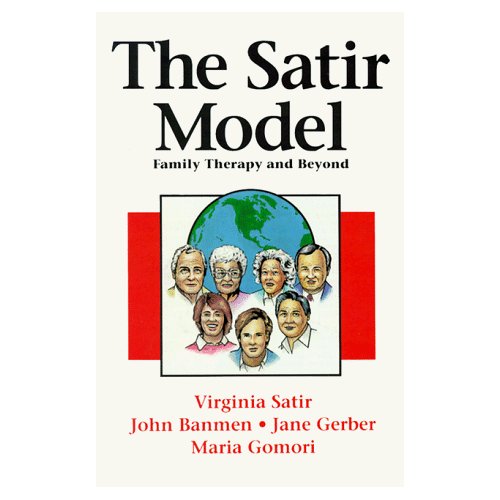|
Picked this up off of my mother's bookshelf over Christmas. In grad school, I focused on Narrative, and Solution Focused Brief Therapy approaches to the detriment of others it seems. I have enjoyed learning about Virginia Satir's work and how she conceptualizes her ideas. Family sculpting, Survival Stances, Congruence and Family Reconstruction are ways that she has developed to help people understand their interaction patterns and how to make changes that last. She believed that there is nobody in the world, no matter what the conditions are on the outside, that cannot change. She believed that human beings can fulfill what they were meant to fulfill; that they can use themselves more positively, more effectively; and that they can have more choices for greater freedom and power.Satir's work is rooted in early development of self esteem and how we learn to communicate based on how our personal efficacy was fostered or suppressed by our primary caregivers, environment and experiences early on.
Congruence is one of her primary tenets . This resonated with me. I try helping others move toward more clearly communicating their needs. I also try to be as congruent as possible in my own life. Congruence refers to a state of being as well as a quality of communicating. At the first of three levels, congruence entails acknowledging and accepting our inner experiences(sensations, interpretations, and consequent feelings about those feelings) and being able to express them. Congruence at level 2 involves listening to our perceptions and expectation, and translating those into a responsible pattern of meeting our needs by tapping our yearnings. At level 3, we move into harmony with our spiritual essence, or what Satir called the universal life force. I am hoping to incorporate some of these ideas into my work. By interacting congruently, we are able to clearly communicate our needs without influence by underlying survival stances. By understanding survival stances and how they have manifested themselves, we are able to bring clarity to the patterns that underlay disconnected relationships then move together into finding mutual goals for changing those patterns. Satir's therapeutic beliefs: 1. Change is possible. Even as external change is limited, internal change is possible. 2. Parents do the best they can at any given time. 3. We all have the internal resources we need to cope successfully and to grow. 4. We have choices, especially in terms of responding to stress instead of reacting to situations. 5. Therapy needs to focus on health and possibilities instead of pathology. 6. Hope is a significant component or ingredient for change. 7. People connect on the basis of being similar and grow on the basis of being different. 8. A major goal of therapy is to become our own choice makers. 9. We are all manifestations of the same life force. 10. Most people choose familiarity over comfort, especially during times of stress. 11. The problem is not the problem; coping is the problem. 12. Feelings belong to us. We all have them. 13. People are basically good. To connect with and validate their own self worth, they need to find their own inner treasure. 14. Parents often repeat familiar patterns from their growing up times, even if the patterns are dysfunctional. 15. We cannot change past events, only the effects they have on us. 16. Appreciating and accepting the past increases our ability to manage the present. 17. One goal in moving toward wholeness is to accept our parental figures as people and meet them at their level of personhood rather than only in their roles. 18. Coping is the manifestation of our level of self-worth. The higher our self-worth, the more wholesome our coping. 19. Human processes are universal and therefore occur in different settings, cultures, and circumstances. 20. Process is the avenue of change. Content forms the context in which change can take place. 21. Congruence and high self-esteem are major goals in the Satir model. 22. Healthy human relationships are built on equality of value. Pretty amazing work. Wish I had spent more time with this in school where I could have had the opportunity to have dialogue with others. tk
Comments
|
AuthorTom Kelley, MA, LMFT. Licensed Marriage and Family Therapist. Archives
January 2018
Categories
All
|

 RSS Feed
RSS Feed